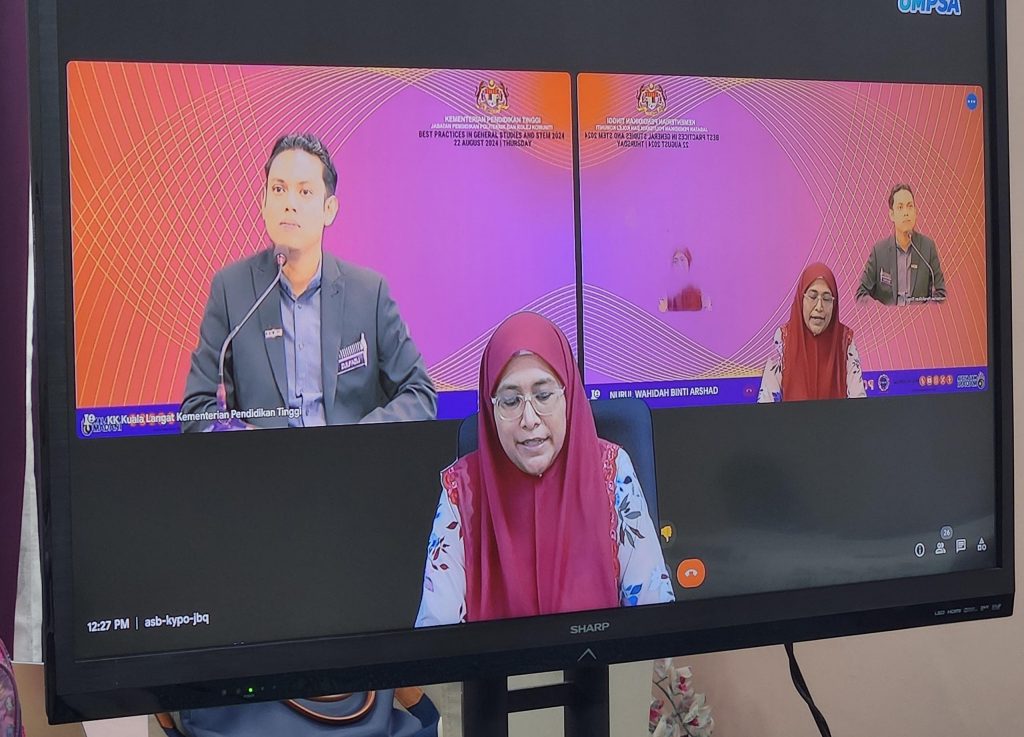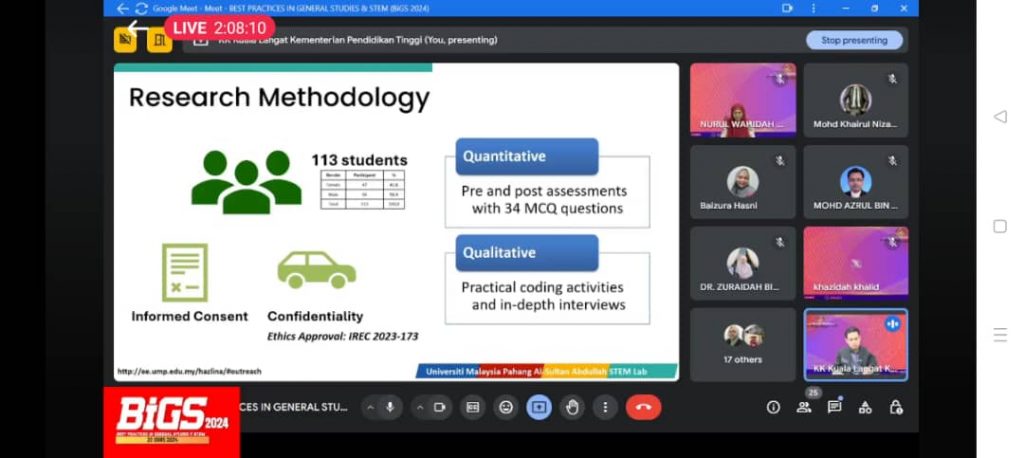Had the opportunity to present a topic on Digital Making Skills Learning Experience with UMP STEM Cube. This project is listed as one of the finalist for 2024 Best Practices in General Studies and STEM, organized by Bhg Kurikulum, Jabatan Pendidikan Politeknik & Kolej Komuniti, Kementerian Pengajian Tinggi (MoHE).
https://www.facebook.com/bigsjppkk2019/videos/760044096134488/
https://www.facebook.com/bigsjppkk2019/videos/961405232338364





Kolb’s Experiential Learning Theory outlines a four-stage cycle: Concrete Experience, Reflective Observation, Abstract Conceptualization, and Active Experimentation. When applied to programming education with the UMP STEM Cube, tiered scaffolding supports students as they progress through each stage of this cycle.
- Concrete Experience (Starting with the Basics) – By engaging directly with the UMP STEM Cube, students gain immediate, tangible experience with coding and hardware.
- Reflective Observation (Understanding and Analyzing) – Students can observe the effects of their code in real-time, reflecting on how their inputs directly influence the Cube’s behavior.
- Abstract Conceptualization (Building on Knowledge) – Through more advanced projects, students conceptualize how different components work together, deepening their understanding.
- Active Experimentation (Independent Exploration) – Students take ownership of their learning by actively experimenting with the Cube, solidifying their understanding through trial and error.

Tiered scaffolding is a teaching strategy that provides structured support to students, gradually removing that support as they become more proficient. When applied to programming education using the UMP STEM Cube, this method offers a clear pathway for novices to develop their skills in a supportive and encouraging environment.
Effective Strategies for Tiered Scaffolding
- Starting with the Basics –We begin with simple tasks like making an LED blink. This introduces students to basic concepts without overwhelming them, allowing them to get hands-on experience with coding and hardware interaction.
- Introducing Incremental Complexity –As students become more comfortable, we introduce slightly more complex tasks, such as controlling multiple LEDs or reading sensor data. These tasks are designed to build on what they’ve already learned, ensuring a smooth transition to more advanced topics.
- Providing Scaffolding Resources – To reduce the intimidation of writing code from scratch, we offer code templates and a system of hints. These resources guide students through challenges while encouraging independent problem-solving.
- Encouraging Independent Exploration – Once students have a solid grasp of the basics, we encourage them to design their own projects. Open-ended assignments foster creativity and allow students to apply their knowledge in new and innovative ways.
- Fostering Peer Support and Collaboration – Group activities and peer review sessions play a crucial role in this approach. They not only help students learn from one another but also build confidence through collaboration.
- Gradual Removal of Scaffolding – As students progress, we gradually remove the scaffolding, encouraging them to tackle problems independently. This step is crucial for developing resilience and preparing them for more advanced challenges.

The tiered scaffolding approach, combined with the UMP STEM Cube, has shown great promise in addressing the common challenges faced by novice programmers. By providing structured support and gradually increasing complexity, students can build their skills at a pace that suits their learning needs.
Among the findings are:-


The feedback from the BiGS 2024 presentation was overwhelmingly positive, with many educators expressing interest in adopting this approach in their own classrooms. The UMP STEM Cube, with its hands-on capabilities, paired with a structured learning framework, offers a powerful tool for educators looking to enhance programming education.
As we continue to refine and expand these practices, I am excited to see how they will further empower students to embrace the world of programming and STEM.


